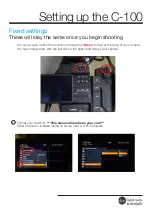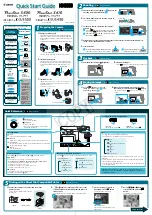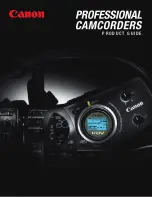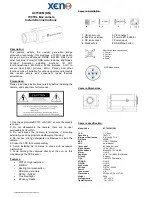
•
Underexposure indication
• If the underexposure has occurred with
cameras of Group I or Nikon Digital cameras
(p. 28, 29),
:
blinks and the amount of
underexposure (0 to –3.0 EV) appears for 3
sec. in the LCD panel, at the same time the
ready-lights blink (as mentioned above).
• Amount of underexposure appears for approx. 3 sec., then disappears.
Pressing the
ZOOM button and the – button
at the same time makes the
amount of underexposure appear again.
21
20
Shooting with Flash
Set the camera’s flash sync
mode, confirm the ready-light
comes on, then take a shot with
the flash. (For details, see your
camera’s instruction manual).
1.
Set the camera’s flash sync mode.
• Set the camera’s flash sync mode to Front-
Curtain Sync for normal flash shooting.
• If your camera is not provided with flash sync
mode option, normal sync mode (Front-
Curtain Sync) is automatically selected.
5
Basic Operation
TTL auto flash shooting distance range in meter (for feet indication, see page 69)
Usable film speeds (sensitivity), usable apertures and flash shooting distance
ranges in the TTL/D-TTL auto flash mode are as follows:
(14mm zoom-head position: with the wide-flash adapter)
For example, if you select f/8 with an ISO 400 film at 35mm zoom-head
position, flash shooting distance range would be 0.6m to 5.5m.
2.
Compose picture, focus and confirm
the ready-light comes on, then shoot
with the flash.
• When the SB-50DX is fully charged and
ready to fire, camera’s ready-light lights up
in the viewfinder as the ready-light on the
SB-50DX turns on.
Selecting the camera’s flash sync mode
In addition to Front-Curtain Sync (normal sync), Slow Sync, Rear-Curtain Sync,
Red-Eye Reduction, etc. can be selected. Available flash sync mode depends
on the camera in use. (For details, see your camera’s instruction manual).
•
If the ready-light blinks after flash
shooting
• In TTL/D-TTL auto flash mode, the ready-light
on the SB-50DX and/or the camera’s
viewfinder ready-light
fi
blink for approx. 3
sec. after shooting when the flash has fired at
its maximum output and underexposure may
have occurred. To compensate, use a wider
aperture (smaller f-number) in Aperture-Priority
Auto or Manual exposure mode or move
closer to the subject and shoot again.
ISO film speed (sensitivity)
Zoom-head position
25
50
100
200
400
800
1600 14mm 24mm 28mm 35mm 50mm
—
—
1.4
2
2.8
4
5.6
0.8-8.4 1.2-12 1.3-14 1.4-15 1.7-18
—
1.4
2
2.8
4
5.6
8
0.6-6.0 0.8-9.0 0.9-10 1.0-11 1.2-13
1.4
2
2.8
4
5.6
8
11
0.6-4.2 0.6-6.3 0.7-7.0 0.7-7.7 0.9-9.1
2
2.8
4
5.6
8
11
16
0.6-3.0 0.6-4.5 0.6-5.0 0.6-5.5 0.6-6.5
2.8
4
5.6
8
11
16
22
0.6-2.1 0.6-3.1 0.6-3.5 0.6-3.8 0.6-4.6
4
5.6
8
11
16
22
32
0.6-1.5 0.6-2.2 0.6-2.5 0.6-2.7 0.6-3.2
5.6
8
11
16
22
32
45
0.6-1.0 0.6-1.5 0.6-1.7 0.6-1.9 0.6-2.3
8
11
16
22
32
45
—
0.6-0.7 0.6-1.1 0.6-1.2 0.6-1.3 0.6-1.6
11
16
22
32
45
—
—
0.6
0.6-0.8 0.6-0.8 0.6-0.9 0.6-1.1
16
22
32
45
—
—
—
—
—
0.6
0.6-0.7 0.6-0.8
Apertur
e
TTL auto flash shooting
distance range (m)
Rear-Curtain Sync not possible with F90-series/N90
Although the Rear-Curtain Sync can be set on the F90-series/N90 camera,
Rear-Curtain Sync will not be performed with the combination of this camera
and SB-50DX.
SB-50DX (E) 02.12.9 2:33 PM Page 20
http://www.mynikon.com.pl












































